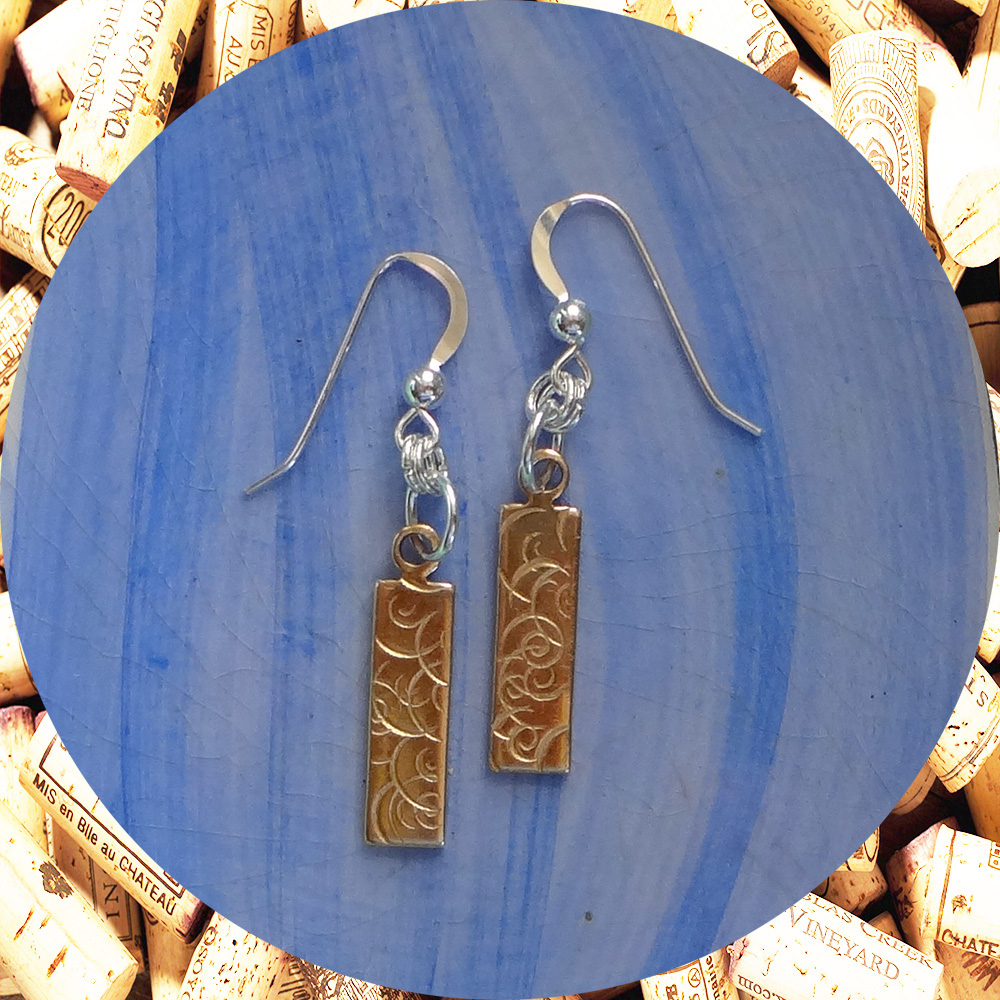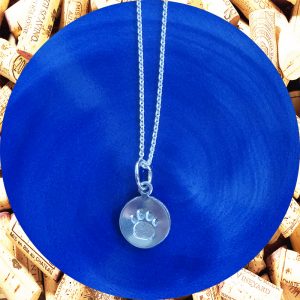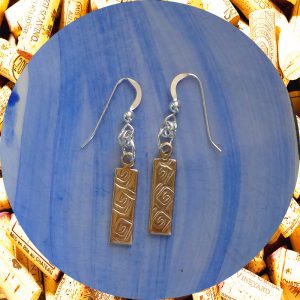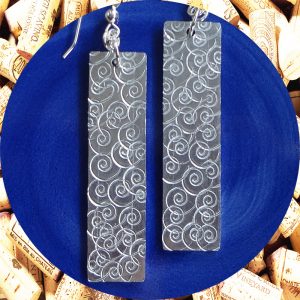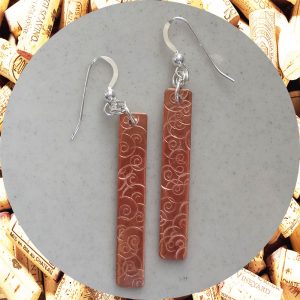Small Rectangular Swirl Brass Earrings
$22.00
Handcrafted Small Rectangular Swirl Brass Earrings. The rectangular Brass forms are embellished with a uniquely whimsical abstract swirl design. Each pair is furnished with Sterling Sliver hooks
Description
- Small Rectangular Swirl Brass Earrings are .5 cm by 2.5 cm and are composed of Premium Brass.
- Each piece is one hundred percent unique with square swirls adorning the entire surface of these handcrafted gems.
- Extremely lightweight, and durable.
- The ear wire is a sterling silver flat fishhook (shepherd hook) with an open loop.
- Kimi Designs also offers a pair of plastic backs with each pair.
- The swirl or spiral has been used throughout history in almost every belief system in one way or another. It is a sacred symbol that represents the journey and change of life as it unfolds; concepts like evolution, life, consciousness, and creation. The spiral symbol can represent the consciousness of nature beginning from its center expanding outwardly.
- These beauties should give you years and years of amazing wear.
Brass is an alloy of copper and zinc
Copper
Elemental Symbol: Cu
Atomic Number: 29
Atomic Mass: 63.546
Discovery of Copper by Dr. Doug Stewart
Of all the metals, copper is the one most likely to be found in its native state, often released by the chemical reaction of its ores.
Although only small amounts of native copper can be found, there was enough of it for our ancestors to discover the metal and begin using it.
Copper has been used by humans for as many as ten thousand years. Beads made from native copper dating from the eighth millennium BC have been found in Turkey.
Crucibles and slags found in Europe suggest that smelting of copper (producing the metal from its ores) took place in the fifth millennium BC.
Copper mining and smelting were commonplace by 4500 BC in the Balkans – Bulgaria, Greece, Serbia and Turkey.
The Copper Age sits between the Neolithic (Stone) and Bronze Ages. It took place at different times in different cultures, when people began using copper tools alongside stone tools.
The Copper Age was followed by the Bronze Age, when people learned that by adding tin to copper, a harder metal that is also more easily cast was formed. Again this happened at different times in different locations in the world.
The word copper is derived from the Latin word ‘cuprum’ meaning ‘metal of Cyprus’ because the Mediterranean island of Cyprus was an ancient source of mined copper.
The element symbol Cu also comes from ‘cuprum.’
Classification: Copper is a transition metal
Color: orange-red
Atomic weight: 63.546
State: solid
Melting point: 1084.62 oC, 1357.77 K
Boiling point: 2560 oC, 2833 K
Electrons: 29
Protons: 29
Neutrons in most abundant isotope: 34
Electron shells: 2,8,18,1
Electron configuration: [Ar] 3d10 4s1
Density @ 20oC: 8.96 g/cm3
Zinc:
Elemental Symbol: Zn
Atomic Number: 30
Atomic Mass: 65.39
Discovery of Zinc
Zinc ores have been used to make brass (a mixture of copper and zinc) and other alloys since ancient times.
A zinc alloy comprising 87.5% zinc was discovered in an ancient site in Transylvania.
Zinc smelting began in the 12th century in India by reducing calamine (zinc carbonate, ZnCO3) with wool and other organic materials.
The element name is reported to come from the old German word ‘zinke’ meaning pointed; a reference to the sharp pointed crystals formed after smelting.
Credit for isolating the metal is usually given to Andreas Marggraf in 1746, in Berlin. He heated a mixture of calamine ore and carbon in a closed vessel without copper to produce the metal.
Classification: Zinc is a transition metal
Color: bluish silver
Atomic weight: 65.41
State: solid
Melting point: 419.53 oC, 692.68 K
Boiling point: 910 oC, 1183 K
Electrons: 30
Protons: 30
Neutrons in most abundant isotope: 34
Electron shells: 2,8,18,2
Electron configuration: [Ar] 3d10 4s2
Density @ 20oC: 7.14 g/cm3
Small Rectangular Square Swirl Brass Earrings

